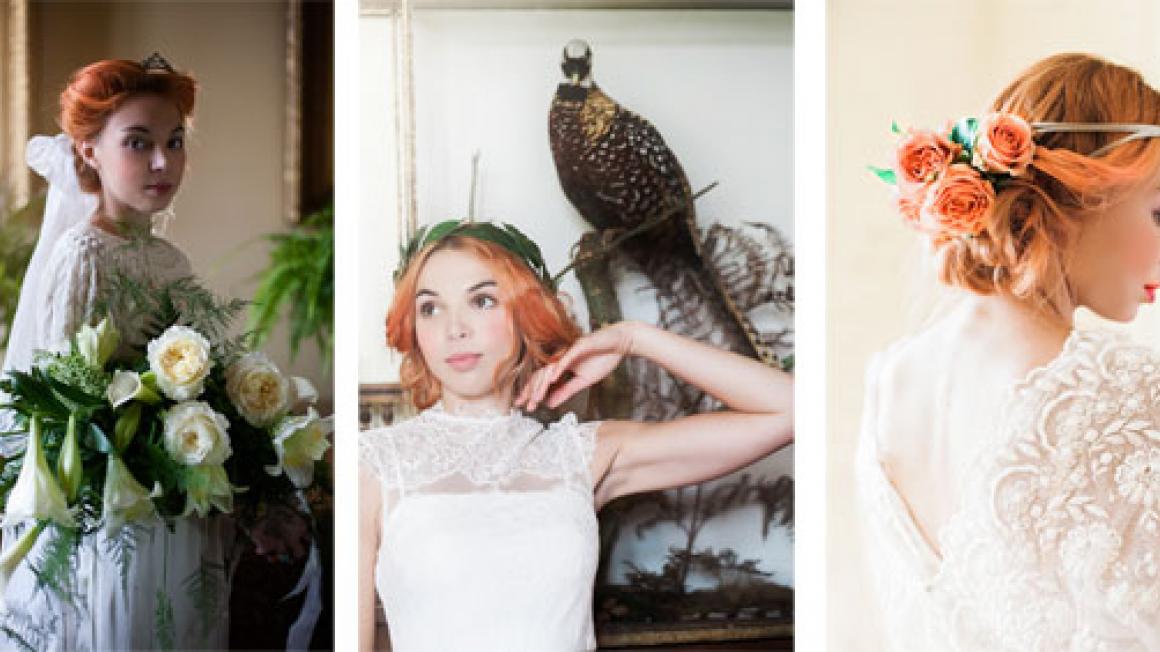20th Century Wedding Fashion: 1910s
The Victorian era saw brides corseted and bustled into uncomfortable styles, which continued into the early years of the 20th century. However, by the latter part of King Edward VII's reign up until World War 1 in 1914, brides were choosing comfort but also fashion, preferring lighter fabrics and looser shapes which continued until the end of the 1920s. This was heavily influenced by a new interest in sport as early as 1910.
Hemlines became shorter, with most ending on the calf revealing ankles for the first time and simple white pumps or boots. Dresses were layered over simple slips, shapes were natural with a satin sash nipping in the waist, often with flower corsage pinned on one side.
The most extravagant dresses would be beaded and embroidered in satins and velvets with multiple layers, teamed with a parasol. The more fashionable brides would have ruffles, long opera gloves and stunning large art nouveau jewellery.
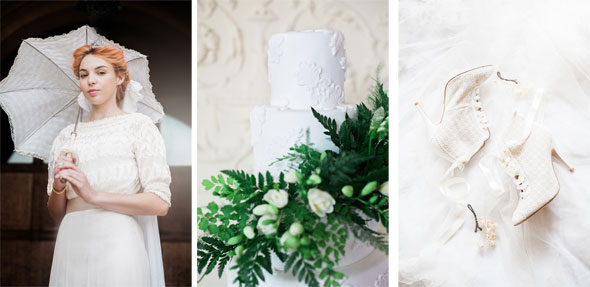
A simpler style would be to wear a white cotton blouse and skirt, which would be perfect for a more country wedding.
"The delight with these early cotton pieces is the delicacy of the fabrics and the intricacy and care that went into the needlework. The commercially made pieces were likely to have been produced for afternoon wear. For a working class girl, it was not unusual for her wedding attire to be a form of best dress that she could wear again making these pieces perfect for a less formal country wedding today. The dress in the picture is cotton lawn with a combination of inset machine lace and hand-made 'Irish' lace and was purchased from America." Erica from Real Green Dress.
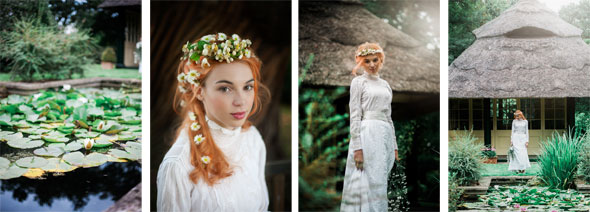
The veil was long and worn cap style with flowers worn over the top reminiscent of the flower crowns worn today. "Motifs in jewellery during the Edwardian era were often floral and romantic - perfect for a wedding! The bracelet, ring and necklace used in this editorial all featured details that were inspired by nature." Gemma from Gemma Redmond Vintage
The Flowers
Brides chose herbs and ferns to adorn their bouquets, believing that the former would warn off evil spirits. Claire from Waterbaby Flowers describes the influences behind the blooms featured here.
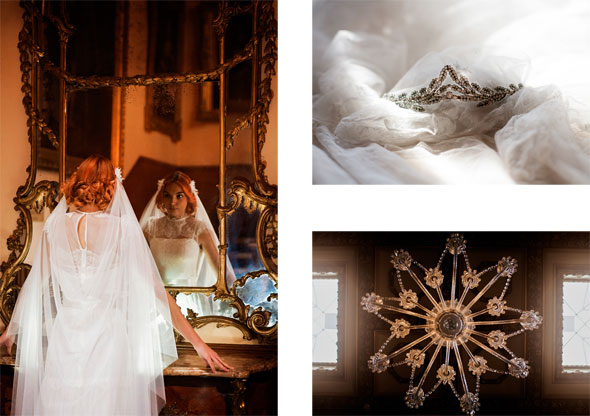
"In Edwardian times, wedding flowers and foliage were laden with symbolic meaning. This overarm style bridal bouquet features lilies signifying purity, roses meaning simplicity, ferns symbolising sincerity, and dill, which was known as the 'herb of lust,' which would have been included a lot, and which the bride and groom would later have eaten. Another popular custom was to wear a crown of bay leaves, as herbs were thought to ward off evil spirits, not to mention add an appealing fragrance to the beautiful bride."
The Cake
The cake often came in three parts: the wedding cake, the bride's cake and the groom's cake. The wedding cake was often made in smaller individual cakes for the guests often with the couple's initials on. The brides cake had a trinket baked inside, and whoever found it was the next to get married. The groom's cake was a dark cake made with brandy or rum.
The bride's cake was decorated with an elaborate cake topper made from wax or ceramic as well as real or paste flowers such as orange blossoms or lily of the valley.
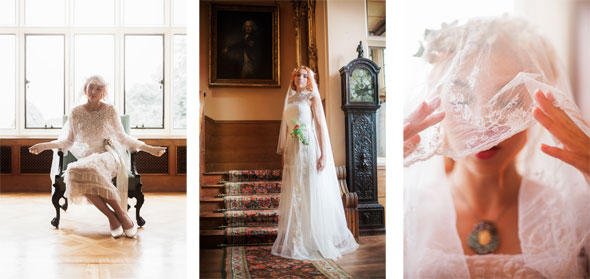
Jenni from Two Little Cats Bakery describes the influences behind the cake featured, "We chose our 'Diana' cake from our Bake & Bloom wedding cake collection as it is perfect with its fern and foliage swag. We added some sugar lace appliqués to the cake mimicking the fashions of the time and some delicate white freesias and the result was the perfect blend of modern romanticism and Edwardian elegance. "
The Photography
Photography was increasing in popularity at this time, so the couple would have had very staged photos taken at their wedding. Clever tricks were introduced to bring through hints of colour within the images, highlighting the bride's flowers and rouge. She stood transfixed in interesting poses to reveal her new slender form.
This look is increasing in popularity for vintage weddings and more cotton and lace styles have survived. However, often the sizes are small but there are some fabulous designers out there inspired by this look catering for all.
The National Vintage Wedding Fair has hundreds of original wedding gowns available to buy on the day as well as everything else you need for your big day. For more information, visit www.vintageweddingfair.co.uk
Their upcoming fairs are Cheltenham May 8th and London May 15th.
Credits
Photography: Claire Macintyre
Model: Chloe Papworth
Styling: Kate Beavis
Hair and Makeup: Aurora Loves
Location: Mansion House, Bedfordshire
Dresses: Days of Grace, Katya Katya Shehurina, Abigail's Vintage Bridal, Real Green Dress
Veils and Wax Flower Headpiece: Real Green Dress
Flowers: Water Baby Flowers
Cake: Bake and Bloom
Court Shoes: Love Lane Wedding Shoe Boutique / Boots: Love Art, Wear Art
Tiara and Side flowers: Cherished Vintage Bridal
Parasol and Gloves: Bijou and Vintage
Jewellery: Gemma Redmond Vintage


